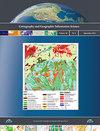地理流的拓扑关系模型
IF 2.4
3区 地球科学
Q1 GEOGRAPHY
Cartography and Geographic Information Science
Pub Date : 2022-09-09
DOI:10.1080/15230406.2022.2104377
引用次数: 2
摘要
地理流动描述了地理物体从起点到终点的运动。它们可以用来表示诸如通勤、商品贸易、信息交换和迁移等活动。地理流的拓扑关系模型通过描述两个流是部分重合还是完全重合来提供对象间相互作用的信息。例如,它可以用于确定城市内的汽车旅行是否可以共享,识别可以一起交付的外卖订单,以及防止无人机碰撞。描述流之间的拓扑关系和相对方向的能力对于分析两个对象之间的交互非常重要。然而,尽管存在许多线的拓扑关系模型,但它们无法准确地描述线之间的拓扑关系和相对方向。为了解决这一问题,本研究通过9交模型的形式化建立了地理流的拓扑关系模型,该模型既可以描述两个流之间的拓扑关系,也可以描述两个流之间的相对方向。通过删除基于某些约束的不存在的关系,获得15个拓扑关系并将其分类为6个拓扑谓词。还开发了一种确定拓扑关系的方法,用于比较流的区段id和偏移量。通过考察基于出租车始发流数据的拼车方案,对所建立的交通拓扑关系模型进行了评价。结果表明,拓扑关系模型可以描述对象之间的交互,并选择与其他流具有特定交互的流。提出了一种拓扑关系模型,该模型比现有模型更准确、更多角度地描述了流之间的拓扑关系。考虑到它的实用性,它可以应用于缓解现代社会的各种紧迫问题。该模型可以应用于拼车方案的设计,以减少二氧化碳的排放。它可以用于防止无人机碰撞,从而提高航空运输的安全性和效率。它可以用于识别城市中的异常区域,以帮助政府更好地规划设施布局。本文章由计算机程序翻译,如有差异,请以英文原文为准。
Topological relationship model for geographical flows
ABSTRACT Geographical flows depict the movement of geographical objects from origin to destination. They can be applied to represent activities such as commuting, commodity trade, information exchange, and migration. The topological relationship model of geographical flows can provide information on the interactions between objects by describing whether two flows are disjoint or coincide partially or completely. For example, it can be applied to determine whether car trips within a city can be shared, identify takeout orders that can be delivered together, and prevent drone collisions. The ability to describe the topological relationship and relative direction between flows is important for analyzing the interaction between two objects. However, although many topological relationship models exist for lines, they are unable to describe both the topological relationship and the relative direction between lines accurately. To address this issue, this study developed a topological relationship model for geographical flows through the formalism of the 9-intersection model that can describe both the topological relationship and the relative direction between two flows. By removing non-existent relationships based on certain constraints, fifteen topological relationships are obtained and classified into six topological predicates. A method for determining the topological relationships was also developed that compares the section IDs and offsets of flows. The developed topological relationship model for flows was evaluated by examining a carpooling scheme based on taxi origin–destination flow data. The results show that the topological relationship model can describe the interactions among objects and select the flows that have specific interactions with other flows. A topological relationship model is proposed that describes topological relationships between flows more accurately and from more perspectives than extant models. Considering its practicability, it can be applied to alleviate various pressing issues in modern society. The model can be applied to the design of carpooling schemes to reduce carbon dioxide emissions. It can be applied to prevent drone collisions and thereby improve air transportation safety and efficiency. It can be applied to identify abnormal areas in cities to help governments better plan the layout of facilities.
求助全文
通过发布文献求助,成功后即可免费获取论文全文。
去求助
来源期刊
CiteScore
5.20
自引率
20.00%
发文量
23
期刊介绍:
Cartography and Geographic Information Science (CaGIS) is the official publication of the Cartography and Geographic Information Society (CaGIS), a member organization of the American Congress on Surveying and Mapping (ACSM). The Cartography and Geographic Information Society supports research, education, and practices that improve the understanding, creation, analysis, and use of maps and geographic information. The society serves as a forum for the exchange of original concepts, techniques, approaches, and experiences by those who design, implement, and use geospatial technologies through the publication of authoritative articles and international papers.

 求助内容:
求助内容: 应助结果提醒方式:
应助结果提醒方式:


